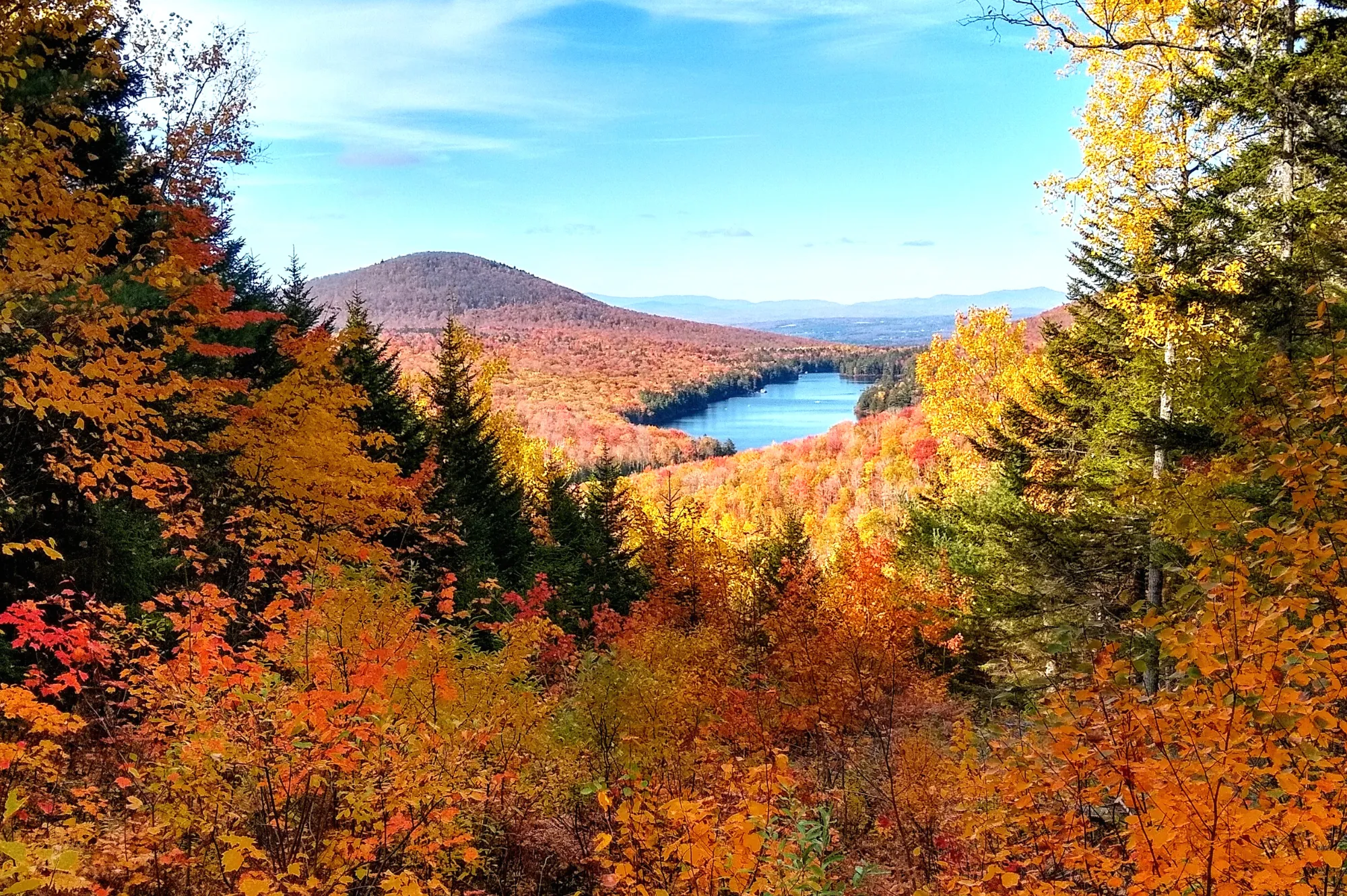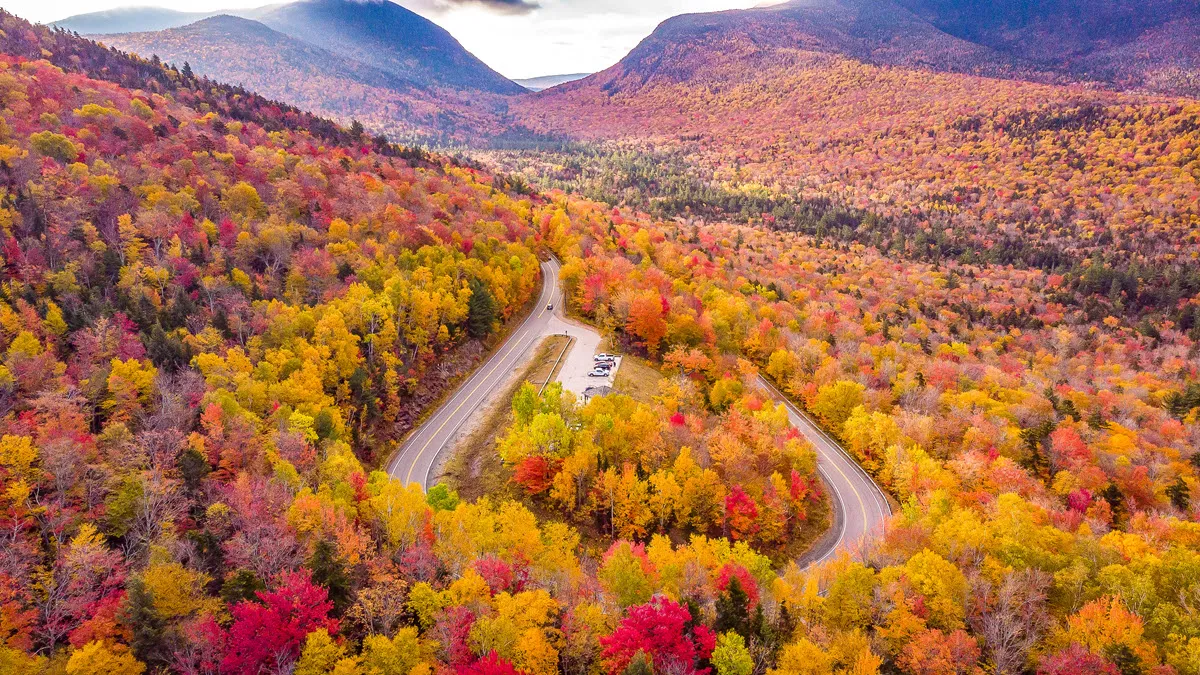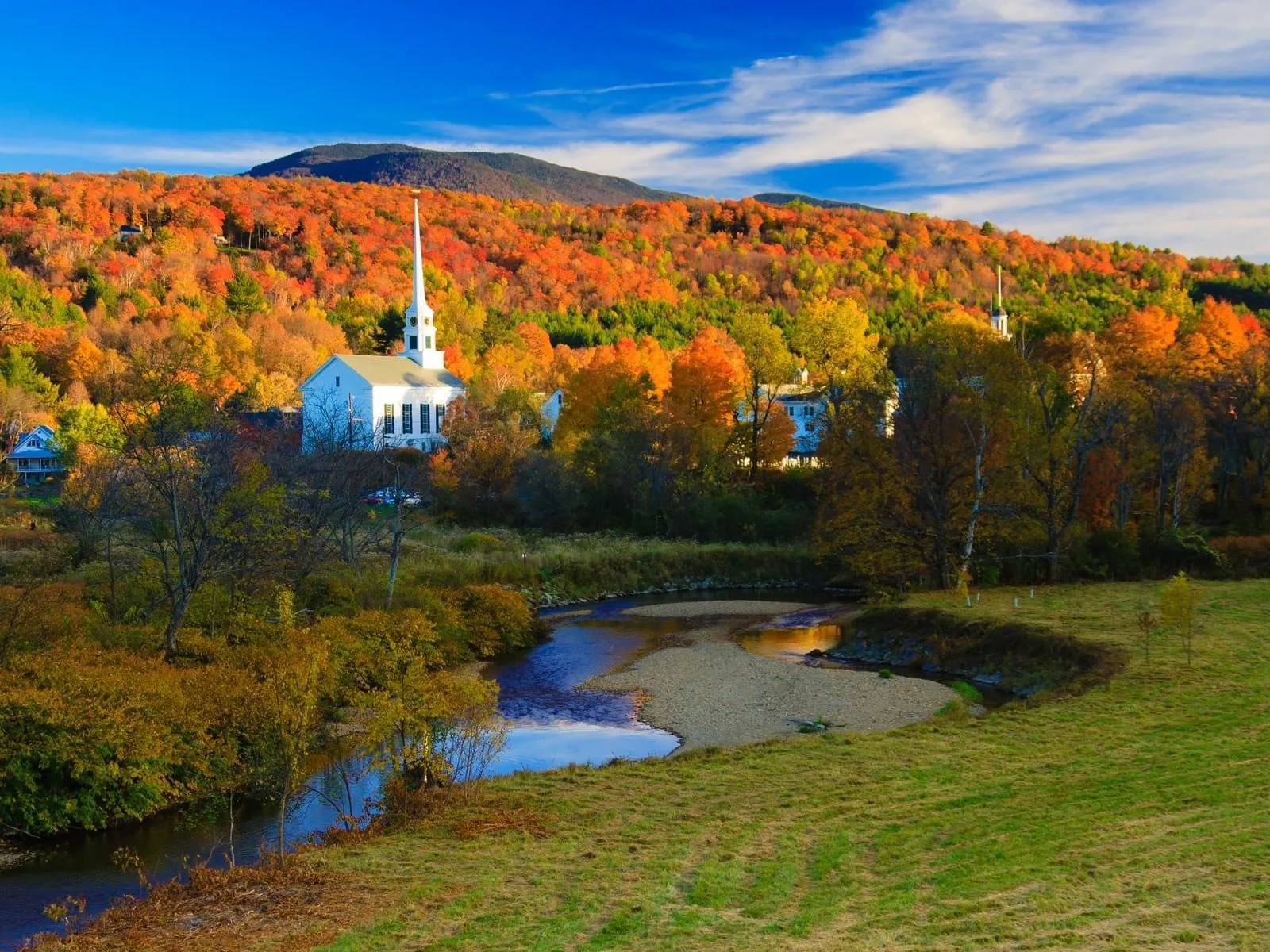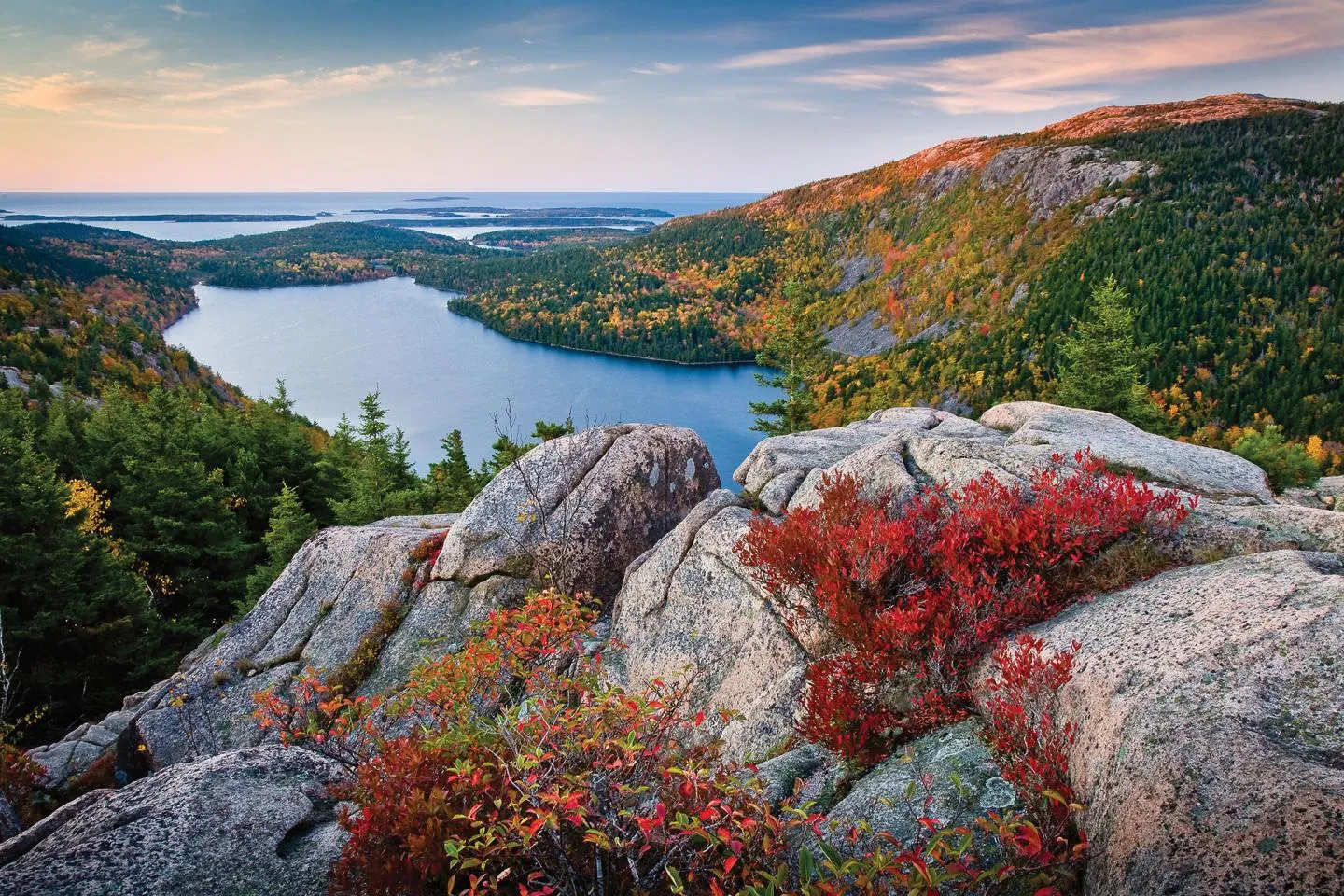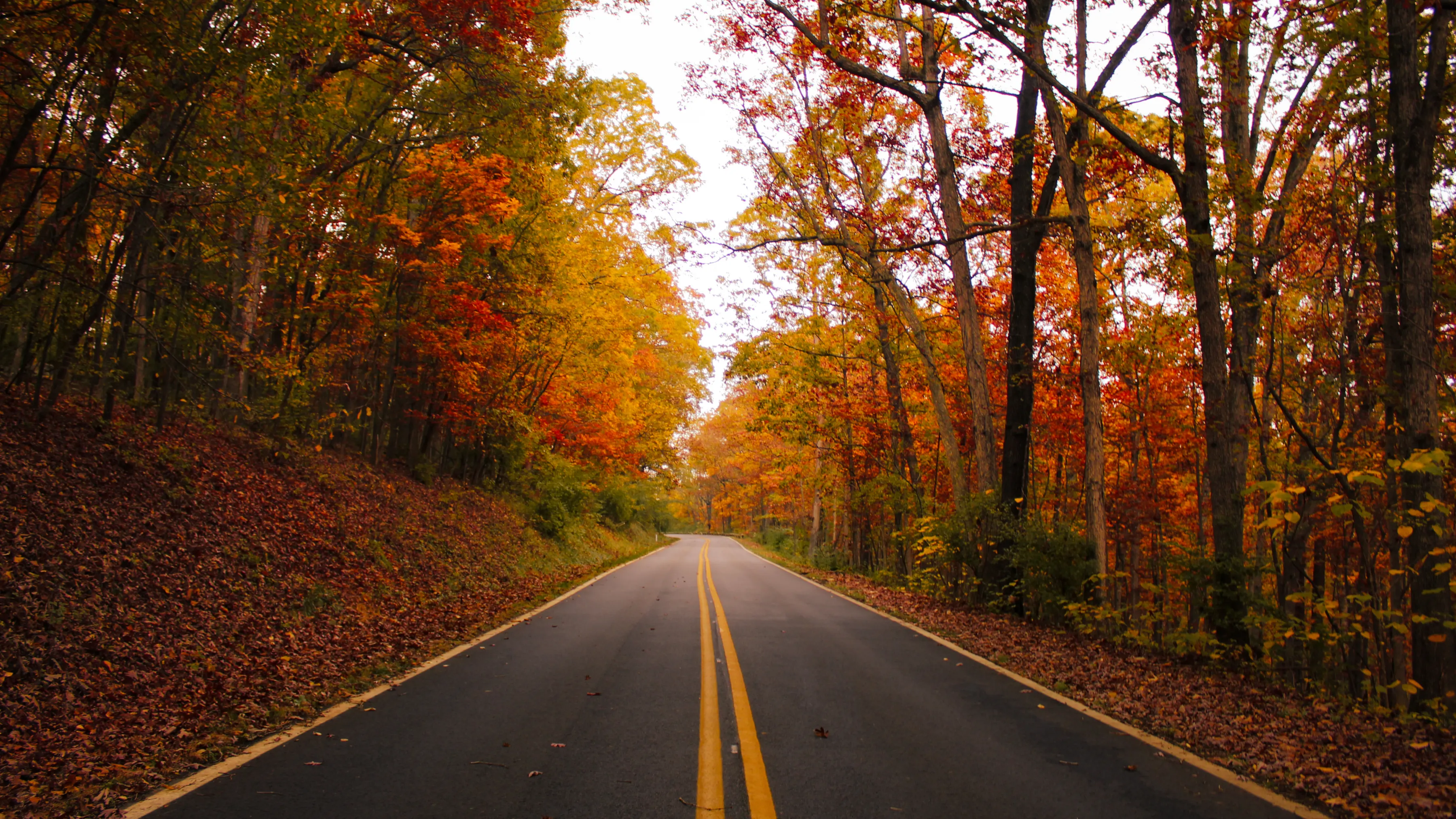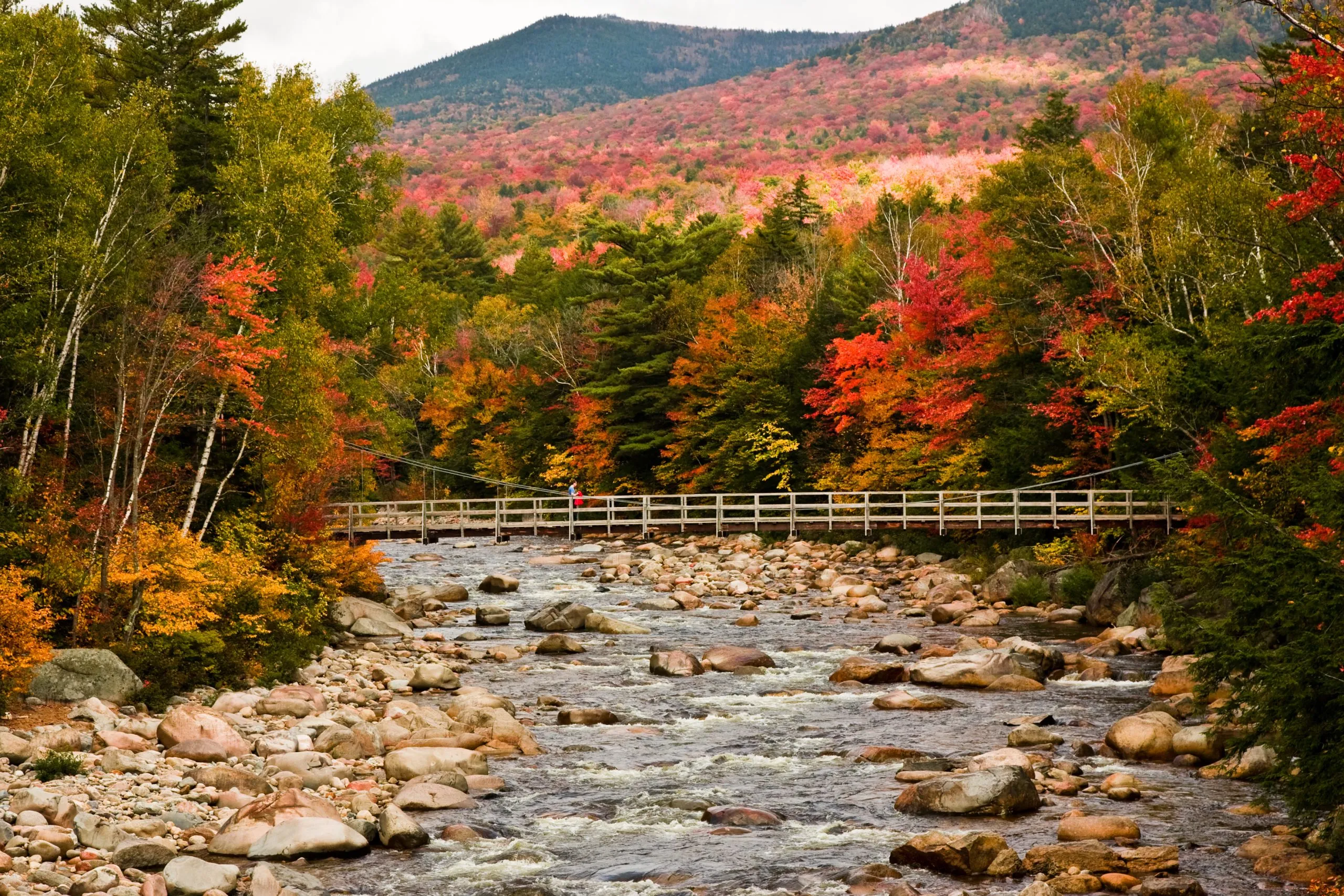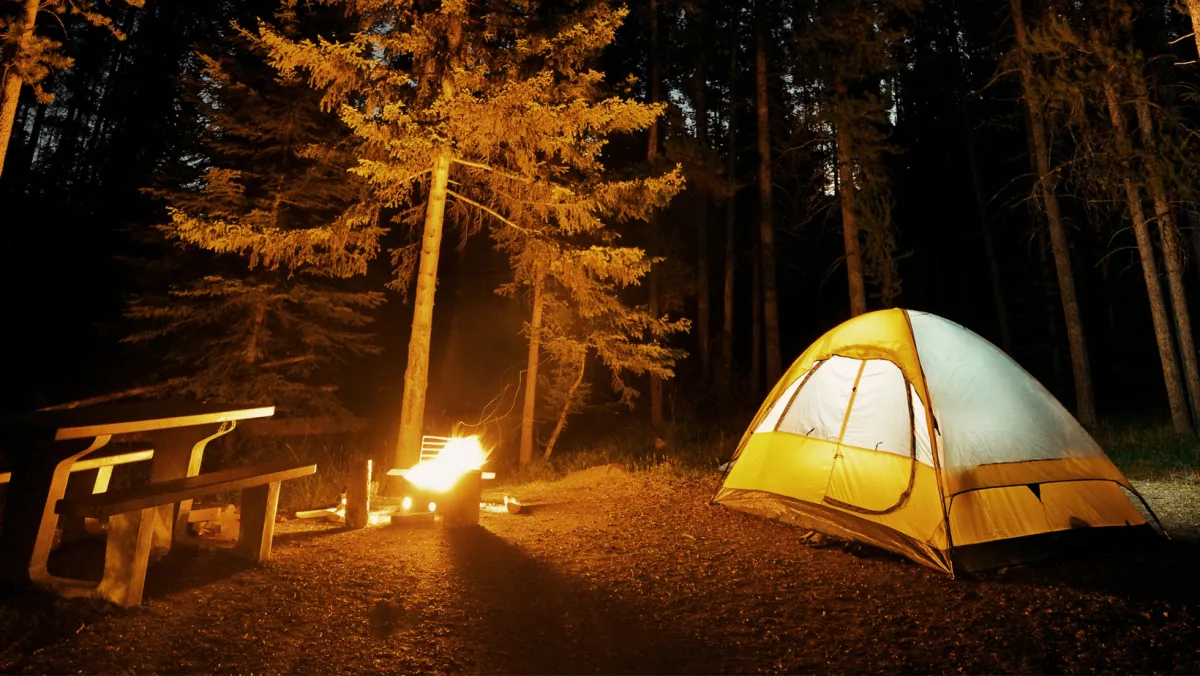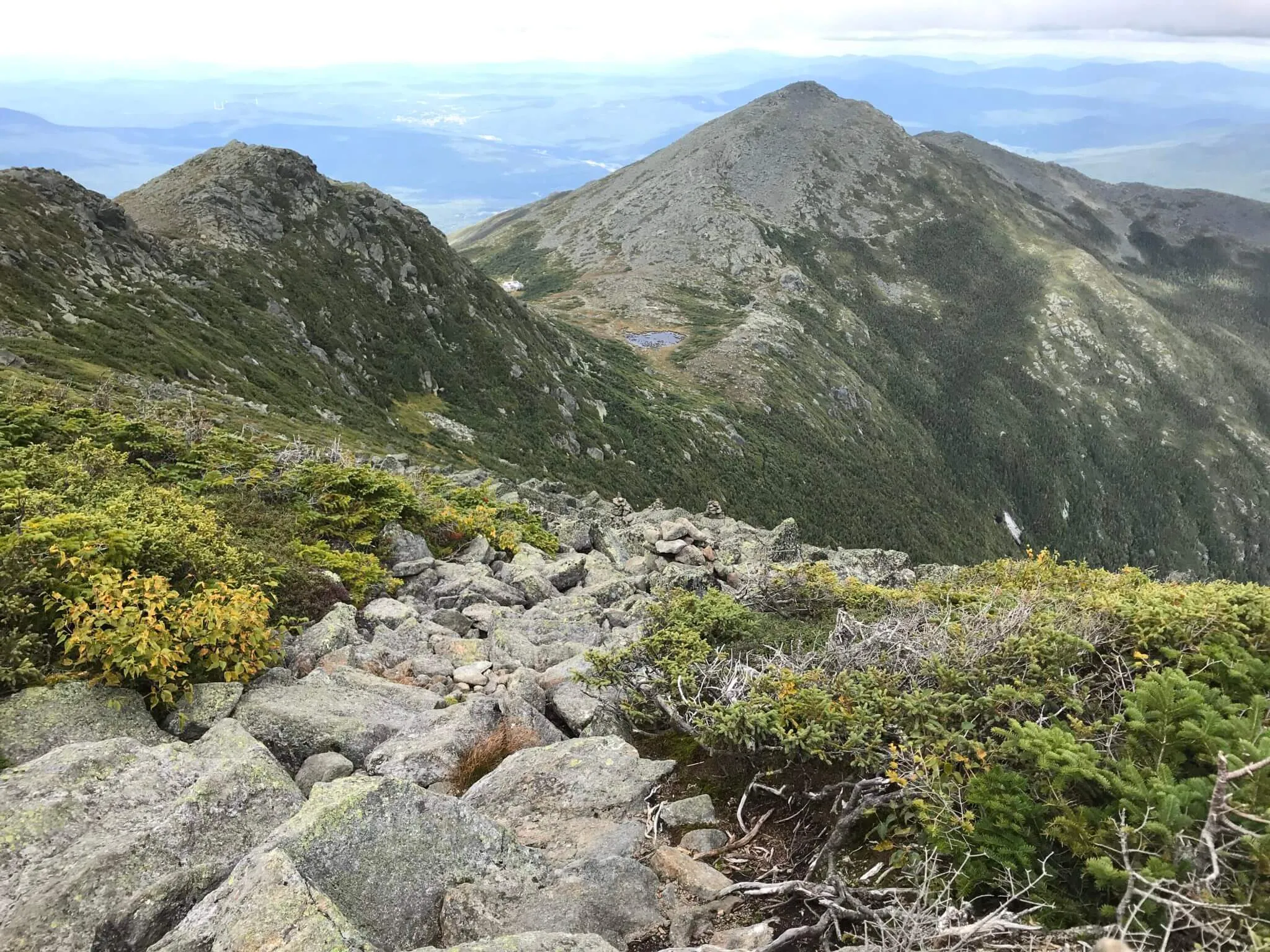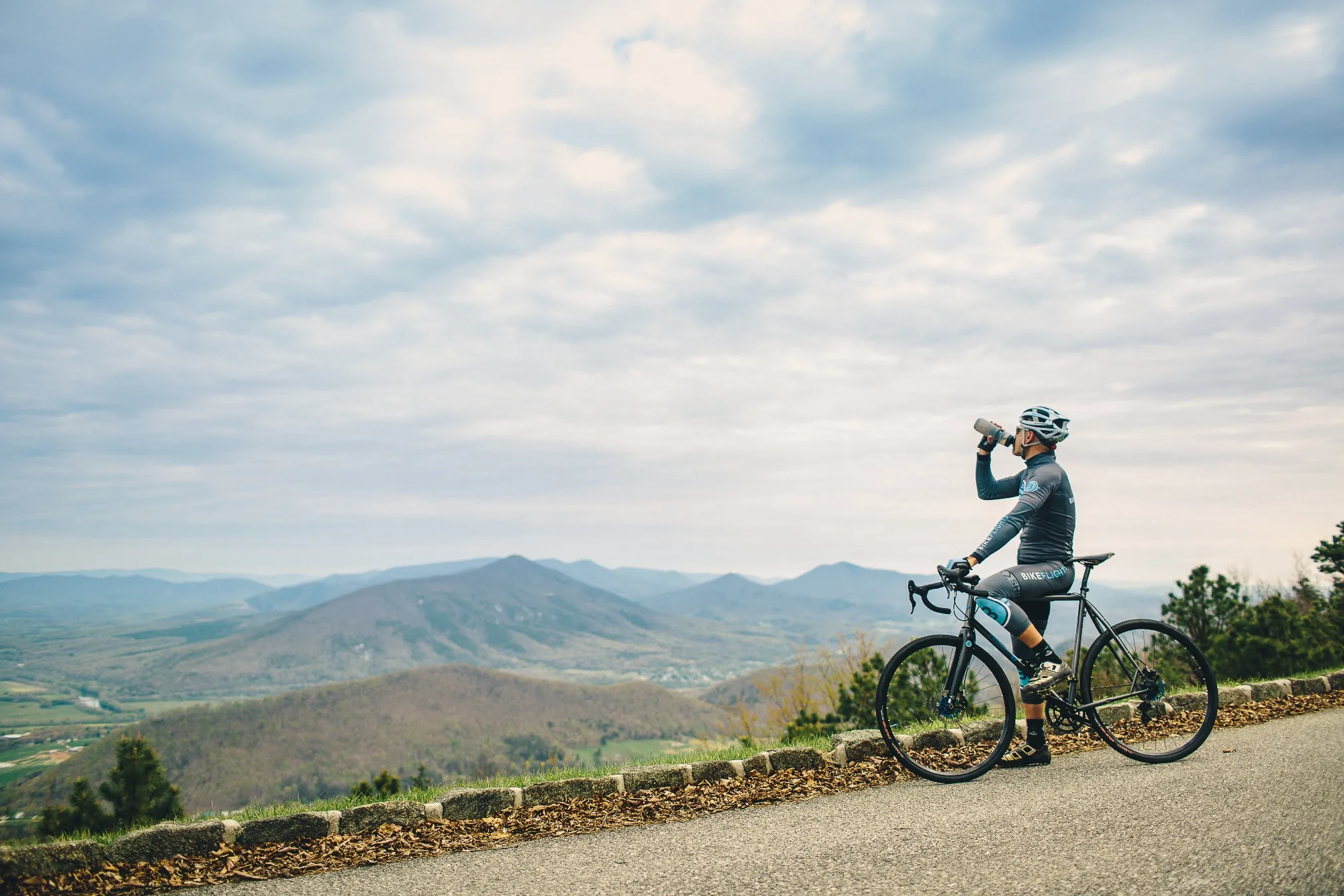There is a moment every year when the air shifts, signaling the start of the East Coast fall foliage season. It begins as a subtle change, with a crispness that bites at the edges of late summer evenings and the scent of distant woodsmoke carried on the breeze. Then, the transformation accelerates into a riot of color so vibrant it feels almost impossible to capture fully in a photograph.
This autumn experience is more than just a season. It is the satisfying crunch of leaves under your boots on mountain trails, the warmth of fresh-from-the-fryer cider donuts in your hands, and the breathtaking sight of millions of trees set ablaze in shades of gold, crimson, and fiery orange. Over the past decade, I have driven thousands of miles chasing peak color, learning that the perfect East Coast road trip combines science, art, and good timing.
Your essential East Coast fall foliage trip planner
A successful East Coast fall foliage trip hinges on careful planning rather than luck. The sheer popularity of this seasonal pilgrimage means that spontaneity can often lead to frustration, sold-out hotels, and hours spent in traffic on what should be a relaxing drive. By addressing the most critical questions upfront, you can craft an itinerary for your East Coast vacation that is both breathtaking and stress-free.
Whether you are a seasoned leaf peeper or a first-time visitor, understanding the nuances of the region is vital. The geography of the East Coast creates a long, rolling season of color that requires a strategic approach to navigation and accommodation. When you plan your trip correctly, you unlock access to hidden gems and avoid the congestion that plagues the most popular scenic byways. The key is to prepare for the specific challenges of the season, from fluctuating weather patterns to the specific peak windows of different states, ensuring your journey is as smooth as it is scenic.
When to see fall foliage on the East Coast
The single most important factor in planning your East Coast fall foliage trip is timing, governed by a simple, predictable pattern: fall color moves from north to south and from high elevation to low elevation. This progression is your strategic advantage. Instead of trying to hit a single, elusive peak day, the best approach is to plan a fall foliage trip that follows this natural wave of color.
The concept of peak East Coast fall foliage is more fluid than many travelers realize. Some consider peak to be when fiery reds of maples are at their most brilliant, even with some green still mixed in. Others define it as when hillsides are a uniform blanket of orange and gold. Both are spectacular. Rather than fixating on a single weekend for your fall foliage trip, build flexibility into your itinerary.
Timeline for East Coast fall foliage:
-
Late September to Early October: The East Coast fall foliage show begins in northernmost regions. This is the time to explore Northern Maine, the highest elevations of New Hampshire’s White Mountains, and Vermont’s remote Northeast Kingdom.
-
Mid-October (The Sweet Spot): This is often considered the prime window for much of New England fall foliage. Color explodes across Southern Vermont, Massachusetts’ Berkshires, and down to Maine’s coast. The wave also sweeps through New York’s Adirondack and Catskill Mountains.
-
Late October to Early November: The vibrant display moves south. Virginia and North Carolina’s Blue Ridge Parkway, along with Great Smoky Mountains National Park, typically hit their stride now.
Official state-by-state foliage trackers
To empower your planning with the most accurate, up-to-date information, bookmark these official resources and fall foliage maps:
-
Maine: Maine.gov Foliage Report – Late September (North) to Mid-October (Coast).
-
New Hampshire: VisitNH.gov Foliage Tracker – Late September (North) to Mid-October (South).
-
Vermont: VermontVacation.com Foliage Report – Late September (NEK) to Early October (South).
-
Virginia: DCR.Virginia.gov Foliage Report – Mid-October to Late October.
-
North Carolina: ExploreAsheville.com Fall Color Map – Mid-October (High Elevation) to Early November (Valleys).
-
Tennessee: TNStateParks.com Fall Colors – Mid-October (East) to Late October (Middle/West).
Lessons from the road: 10 essential tips from seasoned leaf peepers
After years on the autumn road and countless conversations with fellow travelers, I have compiled the most critical lessons for a successful East Coast fall foliage trip. These tips will help you navigate the busy season with ease and avoid common pitfalls.
1. Book everything yesterday (Seriously)
The demand for lodging during the peak East Coast fall foliage season is astronomical. For prime locations like Stowe, Vermont; Lincoln, New Hampshire; or Bar Harbor, Maine, accommodations for October weekends are often booked 6 to 12 months in advance. If you are planning an East Coast family trip, consider booking even earlier to secure larger suites or cabins.
2. Embrace the midweek advantage
If your schedule allows, plan your East Coast fall foliage trip for a weekday. The difference in traffic and crowds is staggering. As one traveler described the weekend Kancamagus Highway, “you could be stuck for 2 hours in bumper-to-bumper traffic.” The same applies to the Blue Ridge Parkway. A Tuesday or Wednesday visit offers a much more serene fall foliage experience and is the secret to a relaxing East Coast weekend getaway.
3. Pack for three seasons in one day
New England fall foliage weather is notoriously variable. A crisp, cool morning can easily turn into a warm, sunny afternoon before plunging back into chilly temperatures after sunset. Layering is not just a suggestion; it is a necessity for any East Coast fall foliage outing. A typical outfit should include a moisture-wicking base layer, a fleece mid-layer, and a windproof shell.
4. Your GPS will fail you (And that’s okay)
Do not rely solely on your phone for navigation during your fall foliage trip. Vast stretches of the most scenic areas, including the White Mountain National Forest, have little to no cell service. Before you leave your hotel, download offline maps. Carry a physical paper map as a reliable backup to ensure you never miss a turn while hunting for the best East Coast sightseeing spots.
5. The half-tank rule
The most beautiful scenic byways are often remote, with no services for long stretches. The Kancamagus Highway has no gas stations along its entire 34.5-mile length. The same is true for the Blue Ridge Parkway. Make it a rule to never let your gas tank drop below half when driving through prime East Coast fall foliage regions.
New Hampshire’s White Mountains: Conquering the Kancamagus and beyond
The White Mountains are the rugged, wild heart of a New England road trip, drawing visitors from across the globe to witness its splendor. Home to the highest peaks in the Northeast, this region offers dramatic vistas and some of the most famous fall foliage drives in the world. The combination of steep granite slopes and dense hardwood forests creates a multi-layered tapestry of color that is unlike anywhere else, making it a mandatory stop on any serious East Coast fall foliage trip.
The Kancamagus Highway (Route 112)
Known affectionately as “The Kanc,” this 34.5-mile National Scenic Byway connects Lincoln and Conway, cutting through the White Mountain National Forest. It is widely considered one of the premier East Coast scenic drives. The traffic during peak season can be heavy, so start your drive early (before 9 AM) or late in the afternoon to avoid the rush.
Can’t-miss stops:
-
Lincoln Woods: Your first major stop on this fall foliage trip. The suspension bridge offers a classic photo op.
-
Hancock Overlook: Located on a hairpin turn, this overlook provides expansive views of the East Coast fall foliage.
-
Sabbaday Falls: An accessible trail leads to a stunning waterfall.
-
Albany Covered Bridge: A historic bridge perfect for capturing the essence of fall foliage.
Beyond the Kanc: Franconia Notch and Crawford Notch
The Kancamagus is just one part of a loop through the White Mountains. Franconia Notch State Park offers iconic East Coast fall foliage experiences. Artists Bluff is a short hike that rewards you with one of the most photographed views in New England. Nearby, the Flume Gorge is a spectacular natural gorge that makes for a beautiful walk amidst the vibrant fall foliage.
Vermont’s color capital: An experiential guide to Stowe
Nestled at the base of Mount Mansfield, Stowe has earned its reputation as the quintessential village for an East Coast fall foliage trip. It is a place where town charm meets the splendor of the Green Mountains. The landscape here is softer and more pastoral than the rugged White Mountains, offering rolling hills dotted with farms that turn into a patchwork quilt of color. This setting provides a diverse range of activities, from leisurely drives to challenging hikes, all immersed in the world-famous Vermont fall foliage.
A perfect fall day in Stowe
Morning (8 AM): Start your day like a local. Grab a maple latte and visit the Cold Hollow Cider Mill. Watching the cider press is fascinating, but the real prize is a bag of donuts to fuel your fall foliage hunt.
Late Morning (10 AM): Drive Smugglers’ Notch (Route 108). This winding pass is flanked by cliffs and is a spectacle when the East Coast fall foliage is peaking. Use the pull-offs to marvel at the views.
Afternoon (1 PM): Experience Mount Mansfield. Take the Gondola SkyRide for unmatched views of the Green Mountains blanketed in red and gold fall foliage. If energetic, the Stowe Pinnacle Trail offers a rewarding hike.
Evening (5 PM): Stroll down Main Street. The classic photo of the Stowe Community Church framed by East Coast fall foliage is a must. Dinner at the von Trapp Lodge Bierhall offers Austrian cuisine with mountain views.
Best fall hikes in Stowe
-
Moss Glen Falls: A family-friendly walk to Vermont’s tallest waterfall, surrounded by fall foliage.
-
Bingham Falls: A short trail descending to a gorge where water cascades into an emerald pool, framed by autumn colors.
Coastal foliage in Maine: Acadia National Park
While Vermont and New Hampshire are defined by mountains, Acadia National Park offers a unique East Coast fall foliage experience: the collision of fiery foliage and the Atlantic coast. As one of the most beloved East Coast national parks, Acadia provides a visual drama distinct from the inland forests. The sight of yellow birches against the deep blue ocean is unforgettable, offering a refreshing variation for your East Coast fall foliage trip.
Best fall hikes in Acadia
-
The Beehive Loop: An adrenaline-pumping climb offering panoramic views of the coast and East Coast fall foliage.
-
Jordan Pond Path: A flat loop offering the classic view of “The Bubbles” framed by fall foliage.
-
Precipice Loop: A challenging climb that is perfect for autumn.
-
Jesup Path & Hemlock Loop: A boardwalk path through a white birch forest. The contrast of white bark against red fall foliage is a photographer’s dream. You can also combine this with an East Coast lighthouse tour by visiting the nearby Bass Harbor Head Light.
Quieter corners: The Berkshires (MA) & Litchfield Hills (CT)
For a laid-back East Coast fall foliage trip, the rolling hills of western Massachusetts and Connecticut are ideal. These areas provide a more intimate experience with the season and are perfect destinations for a Northeast road trip.
In Massachusetts, the Mohawk Trail is a classic drive through the Berkshire Mountains. It passes through charming towns and offers access to Mount Greylock. To the south, Connecticut’s Litchfield County is a hidden gem for East Coast fall foliage. Kent Falls State Park features cascades tumbling down a mountainside, framed by bright fall foliage.
Southern splendor: The Blue Ridge and Smoky Mountains
The East Coast fall foliage tour does not end in New England. The season reaches its crescendo in the rolling mountains of the South. Here, the landscape stretches out in endless ridges of blue and gold, offering a grand scale of beauty that differs greatly from the intimate valleys of the north. The biodiversity of this region results in a complex and long-lasting display of color, making it a crucial leg of the ultimate Southeast road trip.
“America’s favorite drive”: The Blue Ridge Parkway
Stretching 469 miles, the Blue Ridge Parkway connects Shenandoah National Park to the Great Smoky Mountains. It is a masterpiece for any East Coast fall foliage trip.
Can’t-miss stops along the way:
-
Virginia Section: Skyline Drive runs through Shenandoah National Park, famous for overlooks with views of the valley’s fall foliage.
-
North Carolina Section: Key stops include Mount Pisgah and the Linn Cove Viaduct, an engineering marvel surrounded by East Coast fall foliage.
The grand finale: Great Smoky Mountains National Park
The Great Smoky Mountains boast incredible diversity, creating one of the longest East Coast fall foliage seasons.
A photographer’s guide to peak color:
-
Early to Mid-October: Head to high elevations like Clingmans Dome for unparalleled views of the fall foliage spectacle.
-
Mid to Late October: The Cades Cove Loop Road offers views of a valley framed by colorful mountains.
-
Late October to Early November: Explore low elevations like the Deep Creek area, where vibrant fall foliage reflects in mountain streams.
Your unforgettable East Coast fall foliage trip
The East Coast fall foliage experience is America’s ultimate autumn adventure. Whether you are chasing peak color in Vermont or navigating the Blue Ridge Parkway, the key to a successful fall foliage trip lies in planning. These landscapes offer memories that will last a lifetime.
If you are looking to extend your journey or explore different seasons, our guides on East Coast camping and East Coast winter destinations can help you plan your next adventure. For those looking to capture the perfect shot, don’t miss our tips on East Coast photography to enhance your experience. Remember to pack layers, keep your gas tank full, and always have a backup plan when hunting for the perfect East Coast fall foliage.
